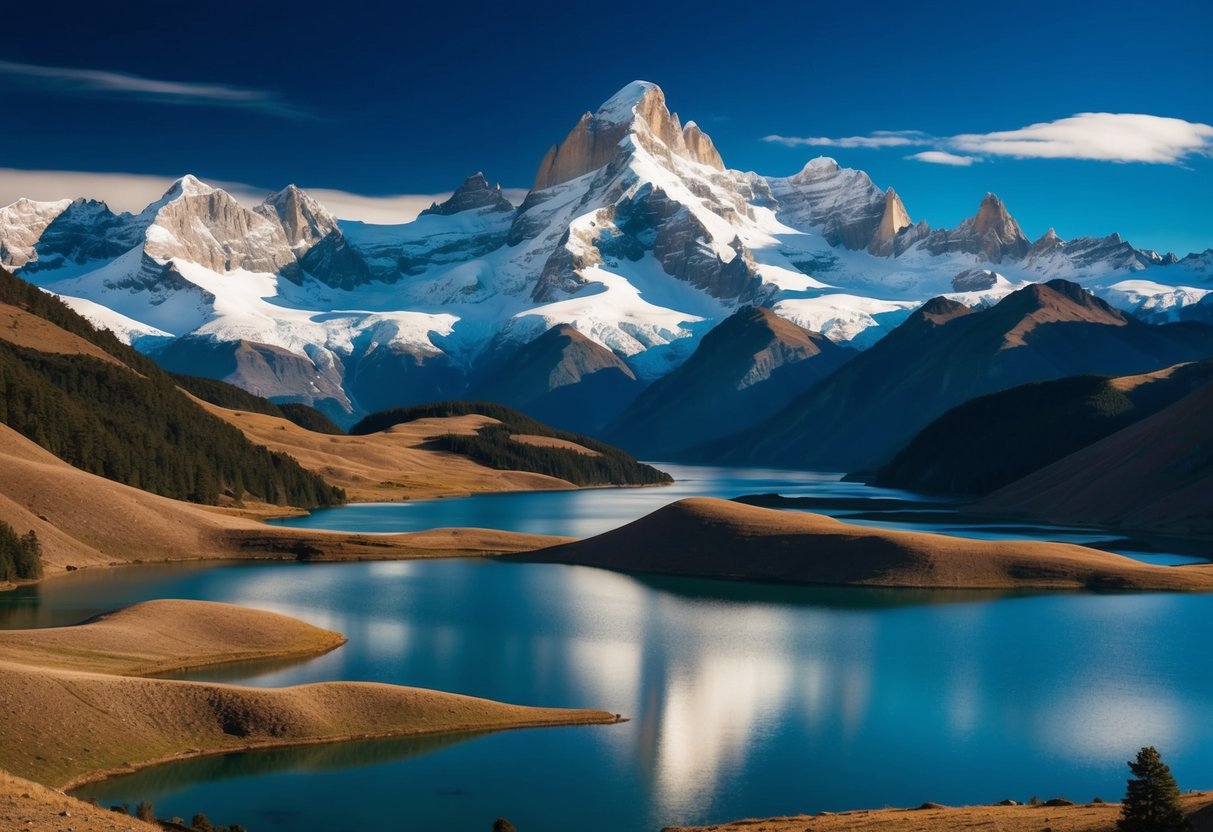
Culture and Heritage of Patagonia
The culture and heritage of Patagonia offer a rich tapestry of influences, from the ancient traditions of indigenous peoples to the unique contributions of European settlers. This diverse cultural landscape is marked by the resilience and adaptability of its inhabitants, each adding distinctive elements to the region’s identity.
Indigenous Peoples and Traditions
Patagonia has been home to indigenous peoples like the Mapuche for centuries. They have cultivated a deep connection to the land, reflected in their spiritual beliefs and community practices. Traditional crafts, including weaving and pottery, are significant aspects of their cultural expression.
The indigenous communities have faced numerous challenges throughout history, especially during the period of European colonization. Despite these adversities, they have preserved their languages and traditions, continuing to celebrate their heritage through festivals and ceremonies. The Mapuche, known for their resistance and resilience, still play an essential role in the cultural landscape of Patagonia.
European Settlers and the Influence of Gauchos
The arrival of European settlers in Patagonia in the late 19th century brought new cultural dimensions to the region. Settlers from Spain, Germany, and other European countries established farms and towns, altering the social and economic fabric. They introduced European architecture, cuisine, and customs, blending these with existing local traditions.
Gauchos, the iconic cowhands of the Patagonian plains, symbolize the merging of indigenous and European influences. These skilled horsemen are renowned for their knowledge of the land and its challenges. Gauchos have become an enduring cultural figure, celebrated in literature, music, and folklore, offering visitors a glimpse into the historical and cultural richness of Patagonia.
Essential Travel Information
Traveling to Patagonia requires careful planning. Understanding the best time to visit, transportation options, and essential safety and health precautions ensures a smooth journey through its breathtaking landscapes.
When to Visit and Weather Considerations
Patagonia’s weather is unpredictable and varies significantly between regions. The ideal months to visit are from October to March. During this period, the weather is milder with longer daylight hours. Summer temperatures range from 54°F to 72°F, but strong winds can make it feel cooler. Winter travel is possible but requires special gear for snow and cold temperatures.
Pack a variety of clothing to prepare for changing conditions. Layering is recommended, with a combination of wind-resistant outerwear and moisture-wicking inner layers. Waterproof jackets are essential due to frequent rain. Those planning outdoor activities should consider sun protection and durable hiking boots to navigate rugged terrains comfortably.
Transportation Options: Public and Private
Transportation in Patagonia is diverse, catering to different preferences and budgets. Public transport includes buses that connect major towns and cities. This option is cost-effective and offers scenic views. However, schedules can be irregular, and routes may not reach remote areas, requiring patience and flexibility.
Car rental provides greater flexibility and access to off-the-beaten-path locations. It allows travelers to explore at their own pace. Renting a car is ideal for those wanting autonomy and the ability to tailor their itinerary. Ensure safety by sticking to main roads, especially during winter. Private transfers and tour guides offer personalized experiences but are more expensive.
Safety and Health: What to Bring
Proper preparation enhances safety and health during a trip to Patagonia. Travelers should carry a basic first-aid kit containing band-aids, antiseptic wipes, and pain relievers. Adequate sun protection, including sunscreen and sunglasses, is crucial due to high UV exposure. Staying hydrated is important, especially when hiking.
While Patagonia is generally safe, always carry a map, compass, or GPS device to navigate its vast landscapes. Those engaging in outdoor activities should bring quality hiking boots for comfort and protection. Insurance covering travel and outdoor activities is recommended for peace of mind. Finally, remain informed about the local emergency contact numbers and procedures.
Local Delicacies and Gastronomy
Exploring Patagonian gastronomy offers a unique taste experience, highlighted by traditional dishes like Cordero al Palo. Visitors can indulge in local specialties, enjoying a culinary voyage that reflects the region’s rich cultural and geographic diversity.
Patagonian Cuisine Highlights
Patagonia’s cuisine is deeply influenced by its natural surroundings and indigenous cultures. Seafood features prominently, with local specialties such as king crab and sea bass. These dishes capture the freshness of Patagonia’s coastal waters.
Inland, the focus shifts to game meats like guanaco and deer, which are often prepared with native herbs, adding a distinct flavor. Sausages infused with local spices are another must-try, embodying the region’s inventive use of its natural bounty.
Cheeses are crafted traditionally, providing a taste that reflects the area’s dairy farming heritage. Paired with local wines, these delicacies offer an authentic glimpse into the local way of life, showcasing the balance between tradition and innovation found throughout Patagonian cuisine.
Experience Cordero al Palo and Other Local Dishes
Cordero al Palo is a defining feature of Patagonian dining. Whole lamb is skewered on a pole and slow-cooked over an open fire for hours. This method infuses the meat with a distinctly smoky flavor, embodying the simplicity and richness of Patagonian cooking.
Aside from lamb, other grilled specialties include locally-sourced beef and llama, offering a diverse meat experience. Serving these with native ingredients like potatoes or calafate berries enriches the flavor profiles further.
Traditional soups, often featuring seafood or game meat, warm the insides, providing comfort alongside new taste experiences. Meals are typically accompanied by regional wines or craft beers, rounding out the dining experience with a local touch. These elements together make dining in Patagonia an immersive experience.